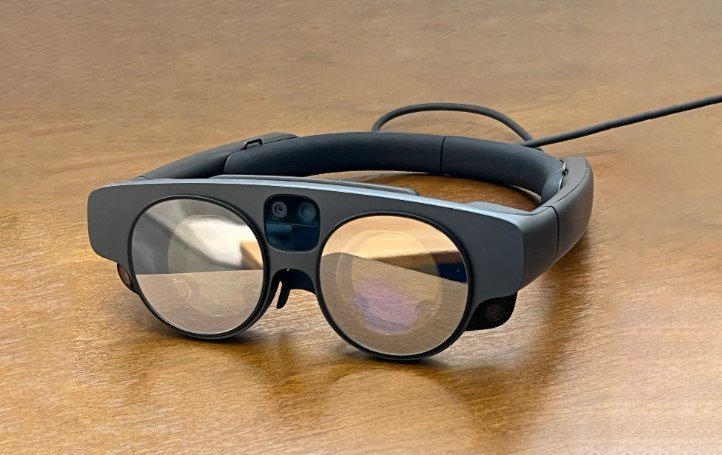Augmented reality (AR) is a technology that enhances the real world with digital information and graphics. AR has many applications in various fields, such as entertainment, education, retail, manufacturing, and more. One of the ways to experience AR is through AR glasses, which are wearable devices that project images and data onto the user’s field of view. AR glasses can provide immersive and interactive experiences that are not possible with traditional screens.
However, developing AR apps for glasses is not the same as developing apps for smartphones or tablets. There are different challenges and opportunities that developers need to consider, such as the user interface, the performance, the compatibility, and the user experience. In this article, we will explore some of the aspects of AR glasses and Android app development and provide some tips and resources for beginners who want to get started.

What are AR glasses, and how do they work?
AR glasses are devices that use lenses, cameras, sensors, and processors to overlay digital content in the real world. Unlike virtual reality (VR) headsets, which create a fully artificial environment, AR glasses allow the user to see and interact with their physical surroundings. AR glasses can display various types of information, such as text, images, videos, animations, 3D models, and more.
There are different types of AR glasses, depending on the technology and the design. Some of the common types are:
- Optical see-through glasses: These glasses use transparent lenses that allow the user to see the real world and the digital content at the same time. The digital content is projected onto the lenses by a small projector or a micro-display. Examples of optical see-through glasses are Google Glass, Microsoft HoloLens, and Magic Leap One.
- Video see-through glasses: These glasses use opaque lenses that block the user’s view of the real world. Instead, the user sees a video feed of the real world captured by cameras on the glasses, along with the digital content. The video feed and the digital content are combined by a computer and displayed on the lenses by micro-display. Examples of video see-through glasses are the Oculus Quest, HTC Vive, and Samsung Gear VR.
- Mixed reality (MR) glasses: These glasses are a subset of optical see-through glasses that can not only display digital content but also interact with the real world. For example, MR glasses can recognize objects, surfaces, and gestures and manipulate the digital content accordingly. MR glasses can also create a sense of depth and realism by using spatial audio and haptic feedback. Examples of MR glasses are Microsoft HoloLens 2, Magic Leap One, and Nreal Light.
How do you develop AR apps for Android devices?
Android is one of the most popular operating systems for mobile devices, and it also supports AR development. There are several platforms and frameworks that developers can use to create AR apps for Android devices, such as smartphones, tablets, and glasses. Some of the most common ones are:
- ARCore: This is Google’s platform for AR development, which provides a set of tools and APIs that enable developers to build AR apps for Android devices. ARCore uses three key features to create realistic and immersive AR experiences: motion tracking, environmental understanding, and light estimation. ARCore also supports cloud anchors, which allow multiple users to share the same AR experience across different devices. ARCore is compatible with a range of Android devices, including some AR glasses, such as the Lenovo Mirage Solo and Nreal Light.
- Sceneform: This is a 3D framework that helps developers build AR apps using ARCore without requiring much knowledge of OpenGL. Sceneform simplifies the process of rendering 3D models, animations, and effects and provides a high-level API that abstracts the complexity of ARCore. Sceneform also supports GLTF files, which are a binary version of the GL Transmission Format and are used for VR and AR applications. Developers can use Sceneform to create AR apps in Android Studio, using Java or Kotlin.
- Unity: This is a cross-platform game engine that can also be used to create AR apps for Android devices. Unity provides a powerful and flexible platform that supports various types of AR content, such as 2D, 3D, video, and audio. Unity also integrates with ARCore and other AR platforms, such as Vuforia and AR Foundation, which provide additional features and functionalities for AR development. Developers can use Unity to create AR apps in C# using the Unity Editor and the Android SDK.
What are the best practices and tips for AR development?
AR development is a challenging and exciting field, but it also requires a lot of skills and knowledge. Developers need to consider various factors, such as the user interface, performance, compatibility, and user experience, when creating AR apps for Android devices. Here are some of the best practices and tips that can help beginners get started:
- Design for the user: The user is the most important element of any AR app, and the app should be designed to meet the user’s needs and expectations. The app should provide clear and intuitive instructions, feedback, and navigation and avoid cluttering the user’s view with unnecessary or irrelevant information. The app should also respect the user’s privacy and security and ask for permission before accessing sensitive data or features, such as the camera, the location, or the contacts.
- Optimize for the device: The device is the second most important element of any AR app, and the app should be optimized to run smoothly and efficiently on the device. The app should use the device’s resources wisely and avoid draining the battery, overheating the device, or crashing the app. The app should also adapt to the device’s capabilities and limitations and provide alternative or fallback options for unsupported or unavailable features, such as the sensors, the display, or the network.
- Test and debug thoroughly: The third most important element of any AR app is quality, and the app should be tested and debugged thoroughly before releasing it to the public. The app should be tested on different devices, environments, and scenarios and checked for any errors, bugs, or glitches. The app should also be debugged using the appropriate tools and methods, such as Android Studio, Logcat, or the ARCore Emulator.
Where can I find more resources and information?
AR development is a fast-growing and evolving field, and there are many resources and information available online for beginners who want to learn more. Here are some of the sources that can help beginners find more resources and information:
- Google Developers: This is the official website of Google’s developer products and programs, which include ARCore, Sceneform, and other AR-related tools and APIs. The website provides documentation, tutorials, samples, guides, and videos for AR development on Android devices.
- Unity Learn: This is the official learning platform of Unity, which offers courses, projects, tutorials, and live sessions for AR development using Unity. The platform covers various topics and levels, from beginner to advanced, and provides certification and badges for learners.
- AR Post: This is an online magazine that covers the latest news, trends, and insights on AR and VR. The magazine features articles, interviews, reviews, and opinions on various aspects of AR and VR, including hardware, software, applications, and events.






